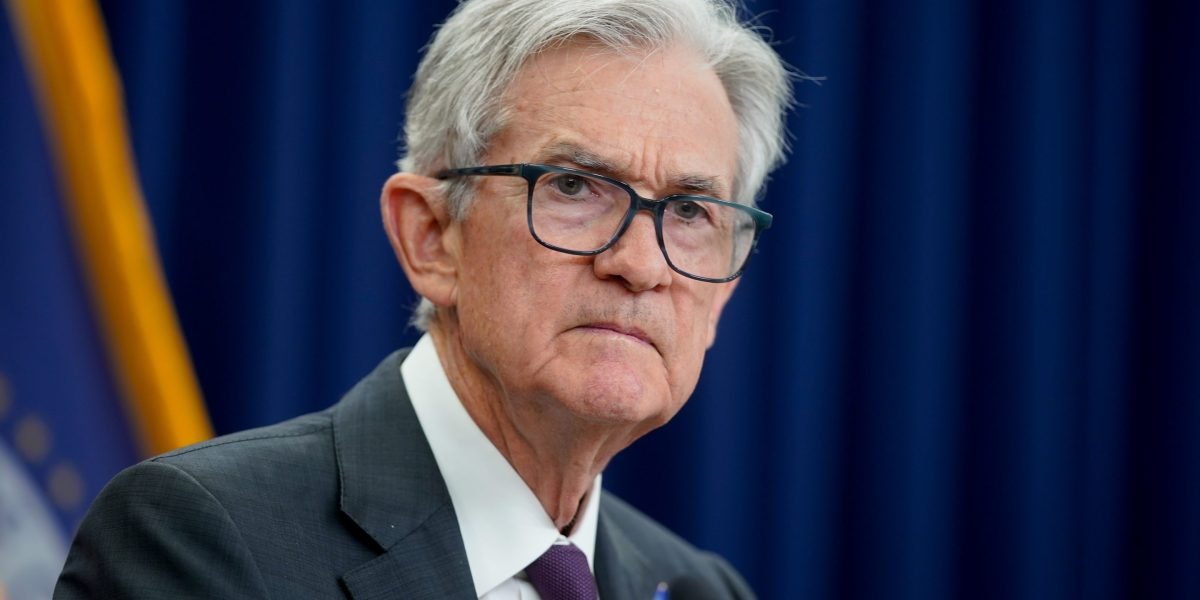
Employment data in July convince Wall Street to cut September

Until Friday, analysts did not have little confidence in the fact that the American Federal Reserve was about to provide a reduction in interest rates, but last week’s reviews of labor market data prompted many to bet in favor of Jerome Powell’s cutting at the next meeting of the Federal Reserve in September.
On Friday, the Ministry of Labor stated that salaries grew by only 73,000 last month, which is much lower than expectations for about 100,000. It also reviewed the estimates for May and June, by 258,000.
With the average profit during the past three months now 35,000, the labor market is present Form is much worse than previously thought. Full employment is half of the double federal reserves – so that many now expect procedures (in the form of cheaper funds) to stimulate economic activity to ensure that jobs do not have any additional success. Analysts now expect to deliver reviews in the end the pieces that the oval office was pressing,
Trump angry president refused doctor. Erika MissinarfarBls Statistics Commissioner (BLS), for reviews to employment numbers. With the opening of the markets today, investors still underestimate the repercussions of the data indicating that the customs tariff is heading more than he had previously hoped. Moreover, the speculators will also prepare for more fluctuations with the approaching date of the tariff from Trump – August 7 -.
Moreover, analysts will also work through the effects of Adriana Kogler’s resignation, a member of the Federal Open Market Committee (FOMC). This represents an opportunity for the president to appoint a more open member on his agenda at a lower basic price – which enhances the hopes of analysts looking for a path towards normalization of interest.
Before the opening of the markets in New York this week, the S&P 500 decreased by 1.6 % at the closure of Friday, Nasdak 2.24 % decrease. In Europe, FTSE 100 in London increased by 0.3 % and DAX in Germany by 1.1 %. S&P futures increased by 0.65 % this morning, indicating that some investors buy the decline.
In Asia – where analysts were given little hope in an imminent agreement with China or India – Nikki 225 in Japanese decreased by 1.25 % while the stylish 50 in India increased by 0.65 %.
Looking at the future, analysts accumulate in the belief that Powell will cut the next meeting of FOMC in September, and they may drop a hint about changing the path this month during the Jackson Hall symposium.
Volumes in CME for 30 days of federal contracts and options in CME Three times between July 31 and August (the day the work data was changed), an increase of 536,563 on Thursday to nearly 1.6 million a day. The price is currently equal to a basic price in the region by 3.75 % – a reduction in two measures from the Federal Reserve.
Cut the probability
The sudden reduction to economic expectations is not the scenario that investors hoped for the reduction: many have hoped that sufficient stable inflation could give FOMC confidence to reduce and support economic activity, unlike the forced reduction required by negative opposite winds.
However, as Jim Reed of Deutsche Bank indicated to customers this morning, the broader image also indicates discounts: “The resignation of the Federal Reserve Governor Koger on Friday has created an opportunity for President Trump to appoint a new member of the Board of Directors. During Trump’s first period.
“The important reviews of the issuance of salary statements on Friday have increased the possibility that other members reconsider their loud positions. The possibility of reducing average in September increased to 87 % on Friday, an increase of about 40 % before issuing salary data, and market pricing for discounts by a year of 41 basis points.”
In fact, Macquarie wrote on Friday that it had driven the timeline to reduce the direct result of the employment report in July.
“Although we do not see much weakness in the labor market, it is possible that the results of this report change the FOMC evaluation of the risk balance on expectations. It has become a more likely discount, it is not certain. This final decision will depend on the inflation contained and the developments of the labor market.”
Even before the head of the Declaration of the Average Powder Powers warned of the need for the Federal Reserve to balance the inflation with the largest possible 2 %, without pressing a work of the monetary policy position that was very narrow.
He has A press conference after preparation Just one week ago, Powell said: “We are interested in the risks on the employment side in our state. In the coming months, we will get a great deal of data that will help inform our evaluation of the risk balance and the appropriate preparation for the rate of federal funds.” Powell mentioned the “negative risks” of the labor market At least six times.
But Bernard Yarros, leading American economists in Oxford’s economic, faced it in a note this week: “The events of this week, the job report in July, was the biggest challenge to our long -standing assumption on monetary policy, but we did not give up our call to resume discounts in interest in December.
“The unemployed increased from the unemployed above, but reading tea leaves is a workforce and initial demands, there is no good reason to expect a sharp increase in the unemployment rate in the coming months.”
Here is a snapshot of the procedure before the opening bell in New York:
- S & P 500 futures contracts It rises 0.7 % before the market.
- Stoxx Europe 600 It increased by 0.7 % in early trading.
- UK FTSE 100 It was 0.3 in early trading.
- Japan Nikki 225 It was a decrease of 1.25 %.
- China CSI 300 It was 0.4 %.
- India Elegant 50 It was 0.65 %.
- Bitcoin Relatively flat at 114,551 dollars.













Post Comment